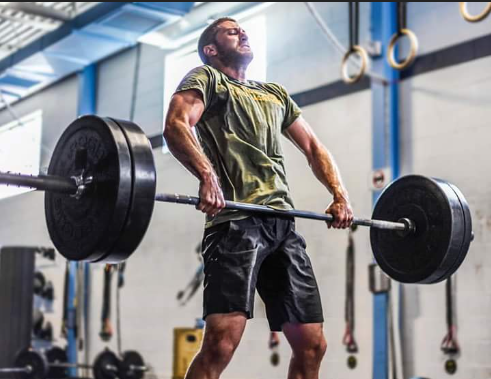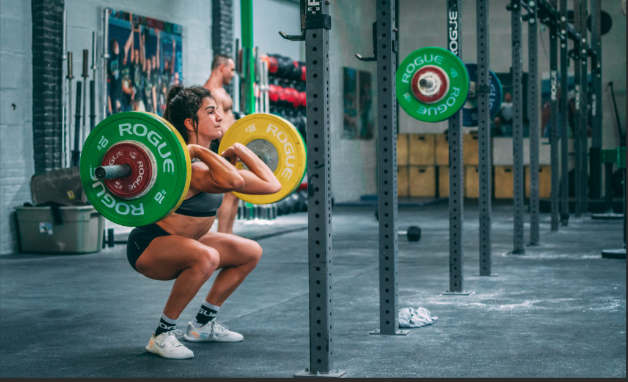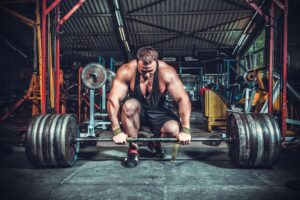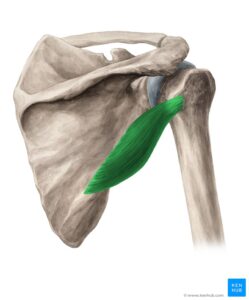Hang Clean vs. Power Clean: The Introduction
Every Olympic Lifter’s bread and butter revolves around arguably the most technical movement in weightlifting; the clean. But is there a superior variation? Introducing the Hang Clean vs. Power Clean showdown. When it comes to building explosive power and strength, these two exercises are second to none. These lifts, which are very important in Olympic weightlifting, offer unique benefits and target various muscle groups. This makes them invaluable for athletes and fitness enthusiasts alike.
But what exactly sets them apart? Why should you choose one over the other, or should you integrate both into your workouts? In this blog post, we’ll dive into the nitty-gritty of the Hang Clean vs. Power Clean matchup. We’ll be breaking down their definitions, steps, and key differences. We’ll also explore the benefits they offer, their suitability for beginners, exciting variations to keep your routine fresh, and insights from experts and scientific studies. Whether you’re a seasoned lifter or just starting out, understanding these powerful exercises can take your fitness game to the next level.
So, grab your barbell and get ready to lift your way to greater strength and power with our Hang Clean vs. Power Clean matchup!
Hang Clean vs. Power Clean: Definition and Execution
Hang Clean
Definition
Now, a hang clean is essentially just a half-version of the full clean, another very well-known explosive movement. In this exercise, the movement begins from a standing position, with the barbell held just above or below the knees. The Hang Clean focuses on developing explosive power, strength, and coordination.
Steps for Proper Execution
-
- Starting Position: Stand with your feet hip-width apart, holding the barbell with a shoulder-width grip. Your knees should be slightly bent, and your back should be flat. The barbell should hang just above or below your knees.
- First Pull: Initiate the movement by extending your hips and knees. Keep the barbell close to your body as you pull it upwards. Your shoulders should stay over the barbell as long as possible. I say this because failing to execute the lift properly results in the all of those gym fail videos that we’ve come to love. So do NOT neglect the first pull.

-
- Second Pull: As the barbell reaches mid-thigh, explosively extend your hips, knees, and ankles (triple extension). Shrug your shoulders and pull the barbell upwards with your arms. Your elbows should remain high and out. If they do not remain high, then that pressure will be transferred to our wrists. Now, our wrists get enough pressure from our favorite 9 to 5 office job. So, the goal is not to place all the weight upon our wrists. This is where the vast majority of wrist injuries come from and is known as “breaking at the wrist.”
-
- Catch: Drop under the barbell and catch it on your shoulders in a front squat position. Your elbows should be high, and your chest up. Stand up to complete the movement.

- Catch: Drop under the barbell and catch it on your shoulders in a front squat position. Your elbows should be high, and your chest up. Stand up to complete the movement.
-
- Reset: Lower the barbell back to the starting position and repeat for the desired number of repetitions. Will this hurt your thighs? Undoubtedly so. But hey, what’s a little body conditioning towards creating explosive thunder thighs!
Power Clean
Definition
The Power Clean is another Olympic lift variation that begins from the floor. Unlike the Hang Clean, the Power Clean involves lifting the barbell from the ground to the shoulders in one fluid motion. This exercise is excellent for building full-body power and strength.
Steps for Proper Execution
-
- Starting Position: Stand with your feet shoulder-width apart and the barbell on the floor. Bend at your hips and knees to grip the barbell with a shoulder-width grip. Your back should be flat, and your chest lifted. A good cue would be to imagine the starting position almost identically to deadlift. Only it’s several hundred pounds being thrown up into the air. But I digress.
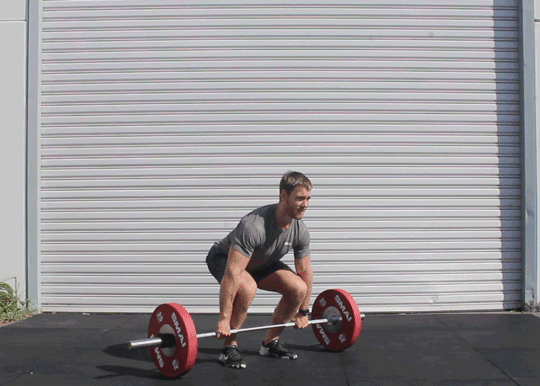
- Starting Position: Stand with your feet shoulder-width apart and the barbell on the floor. Bend at your hips and knees to grip the barbell with a shoulder-width grip. Your back should be flat, and your chest lifted. A good cue would be to imagine the starting position almost identically to deadlift. Only it’s several hundred pounds being thrown up into the air. But I digress.
-
- First Pull: Lift the barbell off the ground by extending your hips and knees. Keep the barbell close to your body and your back flat. Think of it almost like a deadlift. Except it’s eventually going to fly up into the sky.
-
- Transition: As the barbell passes your knees, pull it towards your hips. Your back should be straight, and your shoulders over the barbell. At this point, the power clean becomes basically a hang clean, in that they now follow an incredibly similar movement.
-
- Second Pull: When the barbell reaches mid-thigh, explode your hips, knees, and ankles. Shrug your shoulders and pull the barbell upwards. Your elbows should stay high and out.
-
- Catch: Drop under the barbell and catch it on your shoulders in a quarter squat position. Your elbows should be high, and your chest up. Stand up to complete the movement.
-
- Reset: Lower the barbell back to the floor in a controlled manner and repeat for the desired number of repetitions.
By understanding the definition and execution of both the Hang Clean and Power Clean, you can better determine which exercise fits your training goals and needs. Each lift offers unique benefits and challenges, making them valuable additions to any strength training regimen.
Hang Clean vs. Power Clean: Muscle Groups Targeted
Both Hang Cleans and Power Cleans are highly effective exercises that engage multiple muscle groups. This makes them essential for full-body strength and power development. However, in the Hang Clean vs. Power Clean matchup, the larger range of motion requires a greater use of muscles. In other words, we need more muscle to get the job done. Here’s how each exercise targets different muscle groups:
Hang Cleans:
-
- Primary Muscles: The Hang Clean primarily targets the legs and hips, including the hamstrings, glutes, and lower back. It also heavily engages the quadriceps and calves during the explosive extension phase. You’re basically getting thunder thighs either way.
-
- Secondary Muscles: Additionally, the neck, shoulder, and forearms play significant roles in stabilizing and controlling the barbell throughout the movement.

Power Cleans:
Primary Muscles: The Power Clean begins from the floor, emphasizing a powerful explosion (triple extension) of the hips, knees, and ankles. It targets the lower body muscles, including the quadriceps, hamstrings, glutes, and calves. Similar to the hang clean, this has the potential for massive leg development.
-
- Secondary Muscles: The Power Clean also involves the neck, shoulders, and forearms to maintain stability and control during the lift.
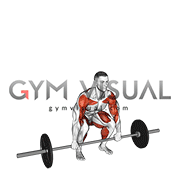
Hang Clean vs. Power Clean: Benefits
Both Hang Cleans and Power Cleans offer numerous benefits, making them valuable exercises for athletes and fitness enthusiasts alike. However, I think restricting the movement to above the hips are of crucial importance to this debate. In that regard, the Hang Clean is the clear victor in that category. More explosiveness is needed to generate power from the hips than the floor, and so in this scenario, the Hang Clean emerges the victor in this crucial Hang Clean vs. Power Clean category. Let’s see how they stack up:
Hang Cleans:
-
- Explosive Power: By starting from a hanging position, Hang Cleans focus on developing explosive power in the lower body and core.
-
- Strength Development: They strengthen muscles throughout the legs and hips, including the hamstrings, glutes, and lower back.
-
- Coordination and Technique: Performing Hang Cleans improves coordination and technique. This is due to the emphasis on proper timing and form during the second pull.
-
- Versatility: Can be adapted with various weights and rep ranges to suit different training goals, from strength to speed.
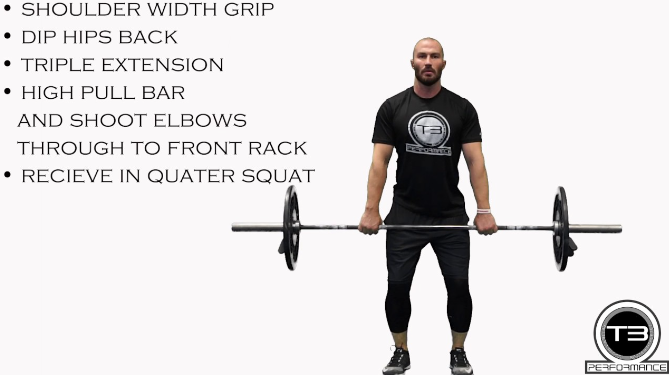
Power Cleans:
-
- Full-Body Power: Power Cleans begin from the floor, requiring a powerful, coordinated explosion of the hips, knees, and ankles, which translates into enhanced full-body power.
-
- Muscle Engagement: They primarily target the lower body muscles, such as the quadriceps, hamstrings, and glutes, while also engaging the upper body and core for balance.
-
- Athletic Performance: Effective for improving athletic performance in sports requiring explosive movements, such as sprinting, jumping, and throwing. That’s not to say, however, that using equipment such as plyometric boxes and sprinting sleds will be of great help too!
-
- Functional Strength: Builds functional strength that translates into everyday activities and sports-specific movements.

Hang Clean vs. Power Clean: Technique Differences
Understanding the technique differences between Hang Cleans and Power Cleans is crucial for mastering these Olympic lifting variations. However, despite the similarities that lie within this Hang Clean vs. Power Clean category, it would seem that technique and range of motion go hand in hand. Let’s delve deeper:
Hang Cleans:
-
- Starting Position: Begins with the barbell held just above or below the knees, maintaining a slight knee bend and flat back posture.
-
- First Pull: Initiated by extending the hips and knees to lift the barbell upward while keeping it close to the body.
-
- Second Pull: Involves explosively extending the hips, knees, and ankles (triple extension), followed by shrugging the shoulders to accelerate the barbell upward.
-
- Catch: Drops under the barbell to catch it on the shoulders in a front squat position, with elbows high and chest up.
-
- Reset: Lower the barbell back to the starting position for numerous repetitions.
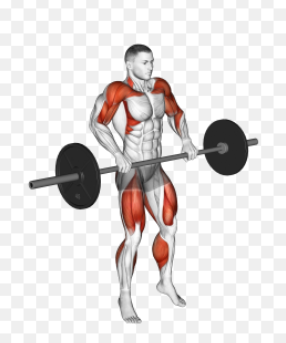
Power Cleans:
-
- Starting Position: Begins from the floor with the barbell gripped shoulder-width apart, maintaining a flat back and chest lifted.
-
- First Pull: Lifts the barbell off the floor by extending the hips and knees, keeping it close to the body as it passes the knees.
-
- Second Pull: Similar to the Hang Clean, involves an explosive triple extension of the hips, knees, and ankles. Then, the shoulders must be shrugged to propel the barbell upward.
-
- Catch: Drops under the barbell to catch it on the shoulders in a quarter squat position, maintaining high elbows and an upright chest.
-
- Reset: Lower the barbell back to the floor under control to prepare for the next repetition.

Hang Clean vs. Power Clean: Strength and Power Development
Both Hang Cleans and Power Cleans are renowned for their ability to enhance strength and power across multiple muscle groups. This valuable asset makes them a crucial exercise in strength training programs. However, as said previously, the larger range of motion is arguably the greatest asset of the Power Clean, and more power is needed to generate force off the floor.
Hang Cleans:
-
- Explosive Power: Hang Cleans focus on explosive power development, particularly in the lower body and core, due to the movement of lower body explosion.
-
- Posterior Chain Strength: They strengthen the posterior chain, including the hamstrings, glutes, and lower back, essential for athletic performance and injury prevention.
-
- Coordination and Stability: Performing Hang Cleans improves coordination and stability, requiring precise timing and technique during the lift phases.
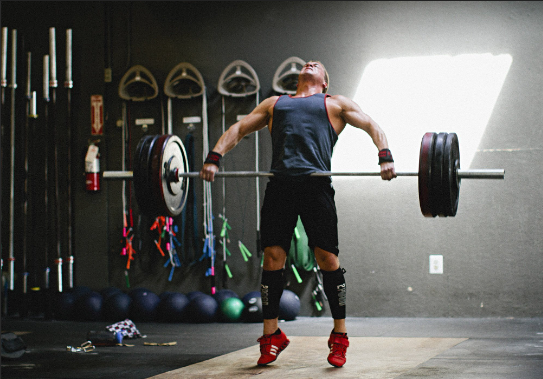
Power Cleans:
-
- Full-Body Power: Power Cleans start from the floor, emphasizing a powerful explosion of the hips, knees, and ankles. This MUST translate into comprehensive full-body power development, or else the lift will have technically been performed incorrectly.
-
- Lower Body Dominance: They primarily target the lower body muscles—quadriceps, hamstrings, and glutes—while also engaging the upper body and core for stabilization and strength.
-
- Athletic Performance Enhancement: Effective for improving explosive movements crucial in sports like sprinting, jumping, and weightlifting.
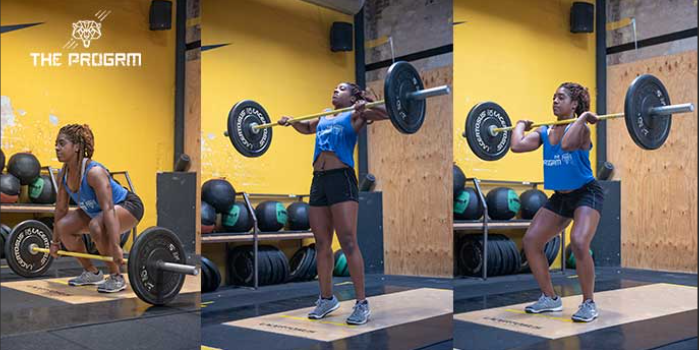
Hang Clean vs. Power Clean: Athletic Performance
Both Hang Cleans and Power Cleans are highly effective exercises for enhancing athletic performance, particularly in sports requiring explosive power and strength. However, I believe that the larger range of motion which are required of power cleans give it the slight advantage for generating whole body movement.
Hang Cleans:
-
- Explosive Power Development: Hang Cleans focus on developing explosive power in the lower body and core, essential for movements like sprinting, jumping, and agility.
-
- Sport-Specific Benefits: They improve the ability to generate force quickly, which is crucial for sports that involve rapid acceleration and change of direction.
-
- Functional Movement Patterns: Performing Hang Cleans enhances coordination and movement efficiency, translating into improved athletic performance on the field or court.
Power Cleans:
-
- Full-Body Explosiveness: Power Cleans begin from the floor with a powerful triple extension of the hips, knees, and ankles, which directly translates into enhanced explosiveness and speed.
-
- Muscular Strength and Power: They target major muscle groups involved in explosive movements, such as the quadriceps, hamstrings, glutes, and core, contributing to overall athletic performance.
-
- Transfer to Sports Skills: The strength and power developed through Power Cleans can improve performance in sports requiring explosive actions, such as throwing, tackling, and vertical jumping.

Hang Clean vs. Power Clean: Suitability for Beginners
Both Hang Cleans and Power Cleans can be suitable for beginners with proper guidance and technique focus. This can offer foundational benefits in strength and power development. However, the Hang Clean emerges victorious in this matchup. Why, you may ask? Simply put, here is less force generated from a Hang Clean than a Power Clean. This means that more focus will have to be placed on technique. Bad technique will not allow that bar to leave your hips. It is the barrier that allows a hang clean to be learned, and so it is essential for beginners to grasp technique, which is good for the long run. Let’s see the matchup:
Hang Cleans:
-
- Initial Learning Curve: Hang Cleans can be easier for beginners to grasp initially, as they start from a static position (above or below the knees) rather than the floor.
-
- Focus on Technique: Beginners can focus on mastering the proper form and technique of the second pull, which involves explosively extending the hips and knees.
-
- Gradual Progression: Starting with lighter weights allows beginners to build confidence and strength gradually, minimizing the risk of injury.

Power Cleans:
-
- Technical Challenge: Power Cleans involve lifting the barbell from the floor in one fluid motion. This requires more technical proficiency in terms of initial setup and execution.
-
- Progressive Learning: Beginners benefit from breaking down the movement into stages—first pull, transition, and second pull—to develop each phase’s technique systematically.
-
- Importance of Coaching: Proper coaching and supervision are crucial for beginners to learn correct form, especially in maintaining a flat back and executing the triple extension efficiently.

Hang Clean vs. Power Clean: Variations and Modifications
Both Hang Cleans and Power Cleans offer variations and modifications that can be used to different training goals and individual preferences.
Hang Clean Variations:
-
- #1: Hang Power Clean: A variation where the catch phase occurs higher, typically at the thighs or hips, reducing the depth of the squat.
-
- #2: Hang Clean High Pull: Focuses on the explosive pull phase without the catch, emphasizing upper body strength and power development.
-
- #3: Single-Arm Hang Clean: Involves performing the Hang Clean with one arm, challenging stability and coordination.
Power Clean Variations:
-
- #1: Power Clean from Blocks: Involves lifting the barbell from elevated blocks or mats, reducing the range of motion and emphasizing explosive power.
-
- #2: Hang Power Clean: Similar to the Hang Clean variation, focusing on power development with a higher catch position.
-
- #3: Split Stance Power Clean: Perform the Power Clean with a split stance, enhancing balance and unilateral strength.

Hang Clean vs. Power Clean: Programming and Integration
Effective programming and integration of Hang Cleans and Power Cleans into your workout regimen can maximize strength, power, and athletic performance gains.
Programming Considerations:
-
- Frequency: Incorporate Hang Cleans and Power Cleans into your training schedule 1-3 times per week, depending on your experience level and overall training volume.
-
- Progressive Overload: Gradually increase weights as you gain strength and proficiency to continually challenge your muscles and stimulate growth.
-
- Warm-Up: Prioritize a thorough warm-up to prepare your muscles, joints, and nervous system for the movements of both exercises.
-
- Recovery: Allow enough recovery between sessions for the best muscle repair and growth, minimizing the risk of overtraining.
Integration Strategies:
-
- Primary Lift: Include Hang Cleans or Power Cleans as a primary strength exercise in your workout routine, typically early in the session when you are fresh.
-
- Supplementary Exercises: Pair these lifts with other exercises such as squats, deadlifts, and upper body movements to create a balanced training program.
-
- Periodization: Periodize your training by varying intensity, volume, and focus (e.g., strength vs. power) to prevent plateaus and ensure continual progress.
-
- Skill Development: Dedicate specific sessions or phases to mastering technique and refining movement patterns to enhance performance and reduce injury risk.
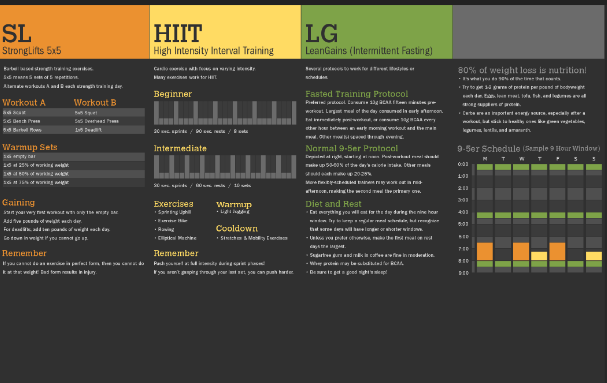
Hang Clean vs. Power Clean: Common Errors and Corrections
Understanding common errors in Hang Cleans and Power Cleans can help you refine your technique and maximize the effectiveness of these exercises.
Hang Cleans:
-
- Error: Improper Starting Position: Starting with the barbell too far from the body or not at the correct height can compromise the lift’s effectiveness.
-
- Correction: Ensure the barbell hangs just above or below the knees, with a shoulder-width grip and knees slightly bent.
-
- Error: Improper Starting Position: Starting with the barbell too far from the body or not at the correct height can compromise the lift’s effectiveness.
-
- Error: Insufficient Triple Extension: Failing to fully extend the hips, knees, and ankles during the second pull limits power generation.
-
- Correction: Focus on explosively extending all three joints while keeping the barbell close to the body.
-
- Error: Insufficient Triple Extension: Failing to fully extend the hips, knees, and ankles during the second pull limits power generation.
-
- Error: Poor Catch Position: Catching the barbell with low elbows or leaning forward can strain the wrists and compromise stability.
-
- Correction: Drop quickly under the barbell, maintaining high elbows and an upright torso to secure the catch in a front squat position.
-
- Error: Poor Catch Position: Catching the barbell with low elbows or leaning forward can strain the wrists and compromise stability.
Power Cleans:
-
- Error: Rounded Back during Setup: Starting with a rounded back increases the risk of injury and reduces power output.
-
- Correction: Maintain a flat back and engage the core muscles before initiating the lift.
-
- Error: Rounded Back during Setup: Starting with a rounded back increases the risk of injury and reduces power output.
-
- Error: Early Arm Pull: Initiating the pull with the arms before fully extending the lower body reduces the efficiency of the lift.
-
- Correction: Emphasize the explosion of hips, knees, and ankles before pulling the barbell with the arms.
-
- Error: Early Arm Pull: Initiating the pull with the arms before fully extending the lower body reduces the efficiency of the lift.
-
- Error: Inadequate Catch Position: Failing to catch the barbell in a stable half squat position with high elbows can lead to loss of control.
-
- Correction: Practice dropping under the barbell quickly, focusing on maintaining a strong upright posture and high elbows.
-
- Error: Inadequate Catch Position: Failing to catch the barbell in a stable half squat position with high elbows can lead to loss of control.
Hang Clean vs. Power Clean: Comparative Analysis
Comparing Hang Cleans and Power Cleans can help determine which exercise best suits your training goals and needs. Both exercises are beneficial, but in this Hang Clean vs. Power Clean category, each exercise offers unique advantages and focuses on different aspects of strength and power development.
Hang Cleans:
-
- Starting Position: The Hang Clean starts from a hanging position (above or below the knees), which allows for a shorter range of motion and place notice on the second pull and catch phases.
-
- Focus: Primarily targets the leg muscles and enhances explosive power and coordination. It is particularly useful for athletes looking to improve their ability to generate force quickly.
-
- Learning Curve: Generally easier for beginners to learn due to the simplified starting position. Emphasizes technique refinement for the explosive pull and catch.
Power Cleans:
-
- Starting Position: The Power Clean begins from the floor, incorporating a full range of motion that includes the first pull, transition, second pull, and catch phases.
-
- Focus: Provides a comprehensive full-body workout, engaging both lower and upper body muscles. Ideal for athletes seeking to develop overall strength and power.
-
- Technical Complexity: More technically demanding due to the initial lift from the floor. Requires a solid foundation in lifting mechanics and often benefits from professional coaching.
Key Differences:
-
- Range of Motion: Hang Cleans involve a shorter range of motion, focusing on the explosive portion of the lift, whereas Power Cleans cover a full range from floor to shoulders.
-
- Muscle Engagement: Both exercises engage similar muscle groups, but Power Cleans offer a more extensive engagement due to the initial lift from the floor.
-
- Technical Requirements: Hang Cleans are often easier for beginners to master, while Power Cleans demand greater technical experience.
Hang Clean vs. Power Clean: Expert Opinions and Studies
Expert opinions and scientific studies provide valuable insights into the benefits and applications of Hang Cleans and Power Cleans, helping athletes and fitness enthusiasts make informed decisions about their training routines.
Expert Opinions:
-
- Strength Coaches: Many strength coaches advocate for the inclusion of both Hang Cleans and Power Cleans in training programs. According to these experts, Hang Cleans are excellent for developing explosive power and are easier for beginners to learn, while Power Cleans offer a comprehensive full-body workout and are essential for building overall strength and athleticism.
-
- Olympic Weightlifting Coaches: Coaches specializing in Olympic weightlifting emphasize the importance of mastering both lifts. They highlight that Hang Cleans can help athletes focus on the explosive second pull and improve technique, while Power Cleans are critical for developing the foundational strength required for more advanced Olympic lifts.
Scientific Studies:
-
- Muscle Activation: Studies have shown that both Hang Cleans and Power Cleans effectively activate major muscle groups, including the quadriceps, hamstrings, glutes, and back muscles. For instance, one study found that Power Cleans elicited higher muscle activation in the quadriceps and hamstrings compared to Hang Cleans, with activation levels reaching approximately 85% and 75% of their maximum voluntary contractions, respectively.
-
- Performance Enhancement: Research published in sports science journals suggests that incorporating Hang Cleans and Power Cleans into training routines can significantly enhance athletic performance. In one study, athletes who performed these lifts twice a week for 12 weeks showed an average increase of 10% in sprinting speed and a 12% increase in vertical jump height.
-
- Injury Prevention: Studies also indicate that proper execution of these lifts can help prevent injuries by strengthening the posterior chain and improving overall body coordination and stability. For example, a study found that athletes who included these lifts in their training had a 30% lower incidence of lower body injuries compared to those who did not.

Hang Clean vs. Power Clean: The Ultimate Conclusion
Incorporating Hang Cleans and Power Cleans into your training routine can yield significant benefits in terms of strength, power, and athletic performance. Both exercises, while sharing similarities, offer unique advantages that cater to different training needs and goals.
Hang Cleans are particularly useful for developing explosive power and are easier for beginners to learn, thanks to their simplified starting position. They focus on the posterior chain and improve coordination, making them a valuable addition to any athlete’s regimen.
Power Cleans, on the other hand, provide a comprehensive full-body workout, engaging both lower and upper body muscles. They are ideal for athletes seeking to build overall strength and power, and their technical complexity offers a rewarding challenge for those willing to master the lift.
However, our results speak for themselves, and it seems that the victor is in the Hang Clean vs. Power Clean War is the Power Clean, for greater muscle activation, power development, and scientific data in support of its superiority. But that does not mean that Hang Cleans are useless for increased gym performance. Whether you’re a novice lifter or an experienced athlete, both Hang Cleans and Power Cleans can be integrated into your training program to enhance your performance and reduce injury risk.
Key Takeaways:
-
- Muscle Groups Targeted: Both exercises effectively engage major muscle groups, with slight variations in emphasis.
-
- Benefits: Both lifts offer significant gains in strength, power, and athletic performance.
-
- Technique Differences: Understanding the distinct starting positions and phases of each lift is crucial for proper execution.
-
- Strength and Power Development: Both exercises contribute to explosive power and overall strength.
-
- Athletic Performance: Both lifts enhance performance in sports requiring speed, agility, and power.
-
- Suitability for Beginners: Hang Cleans are generally more accessible for beginners, while Power Cleans require more technical proficiency.
-
- Variations and Modifications: Numerous variations allow for tailored training that meets specific goals.
-
- Programming and Integration: Effective programming involves incorporating these lifts with proper frequency, progression, and complementary exercises.
-
- Common Errors and Corrections: Awareness of common mistakes and their corrections helps in refining technique.
-
- Comparative Analysis: Both exercises offer unique advantages, making them valuable for different training focuses.
-
- Expert Opinions and Studies: Scientific research and expert insights validate the effectiveness of both lifts.
By integrating Hang Cleans and Power Cleans thoughtfully into your training regimen, you can achieve a well-rounded approach to building strength and power, enhancing your overall athletic capability.
